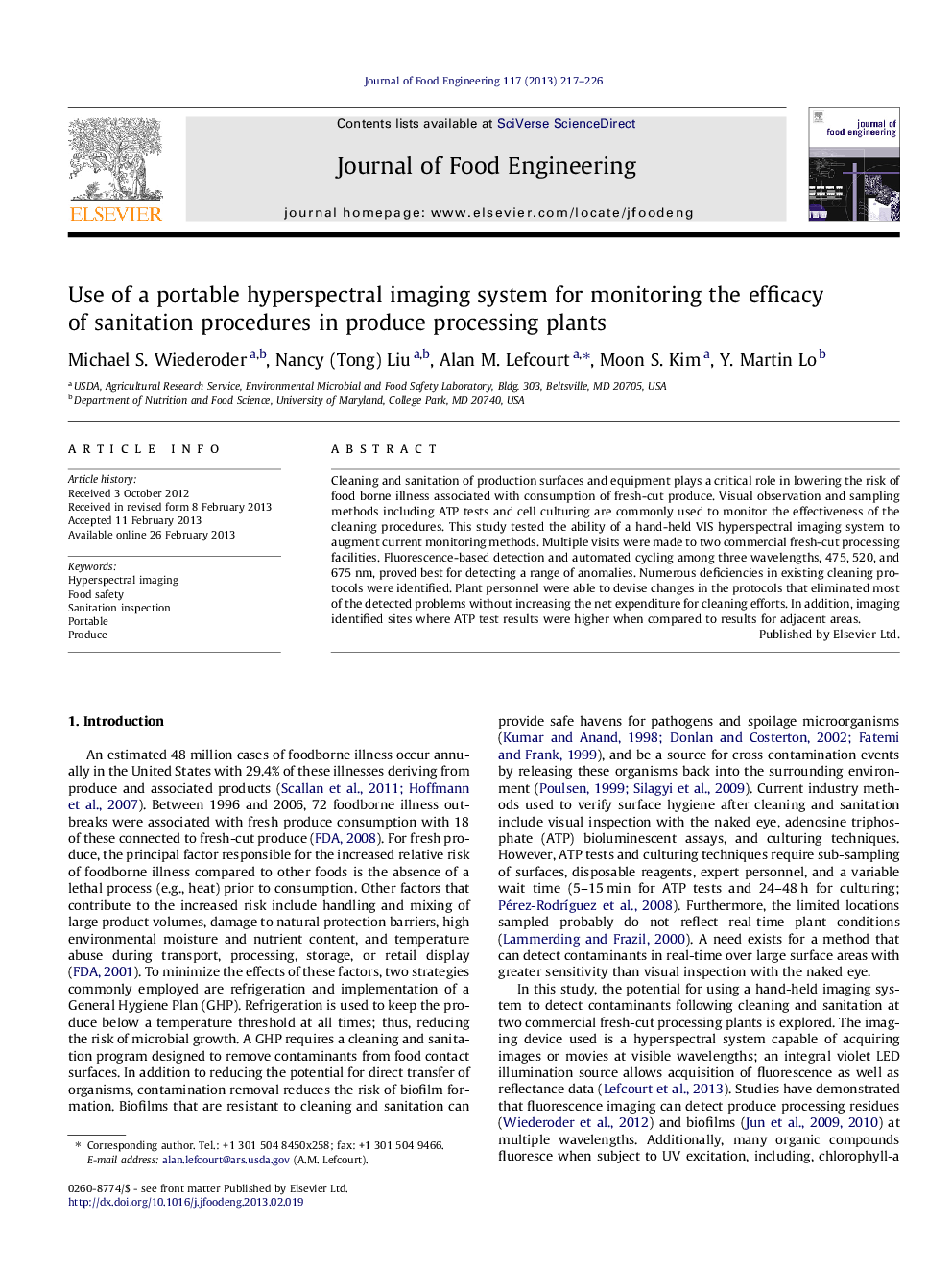| کد مقاله | کد نشریه | سال انتشار | مقاله انگلیسی | نسخه تمام متن |
|---|---|---|---|---|
| 223240 | 464345 | 2013 | 10 صفحه PDF | دانلود رایگان |

Cleaning and sanitation of production surfaces and equipment plays a critical role in lowering the risk of food borne illness associated with consumption of fresh-cut produce. Visual observation and sampling methods including ATP tests and cell culturing are commonly used to monitor the effectiveness of the cleaning procedures. This study tested the ability of a hand-held VIS hyperspectral imaging system to augment current monitoring methods. Multiple visits were made to two commercial fresh-cut processing facilities. Fluorescence-based detection and automated cycling among three wavelengths, 475, 520, and 675 nm, proved best for detecting a range of anomalies. Numerous deficiencies in existing cleaning protocols were identified. Plant personnel were able to devise changes in the protocols that eliminated most of the detected problems without increasing the net expenditure for cleaning efforts. In addition, imaging identified sites where ATP test results were higher when compared to results for adjacent areas.
► Inspection of produce facilities using a handheld hyperspectral imaging system.
► Fluorescence-based imaging detected produce residues and wear on cutting boards.
► Good wavelengths for detection with violet excitation were 475, 520, and 675 nm.
► Imaging proved to be a useful tool for assessing the efficacy of cleaning procedures.
► Immediate feedback allowed detected problems to be addressed in real-time.
Journal: Journal of Food Engineering - Volume 117, Issue 2, July 2013, Pages 217–226